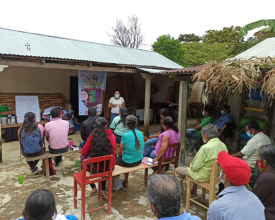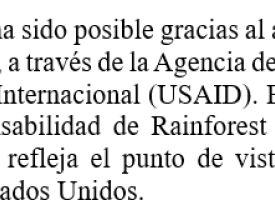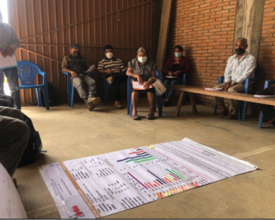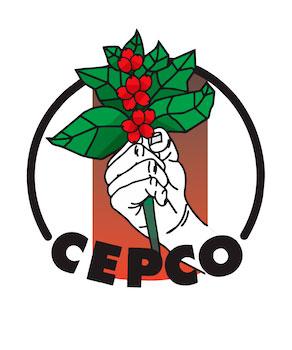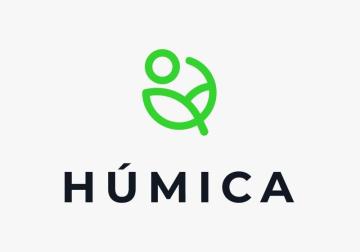
Development and implementation of a Soil Enrichment Plan in coffee production landscapes in Oaxaca (Mexico).
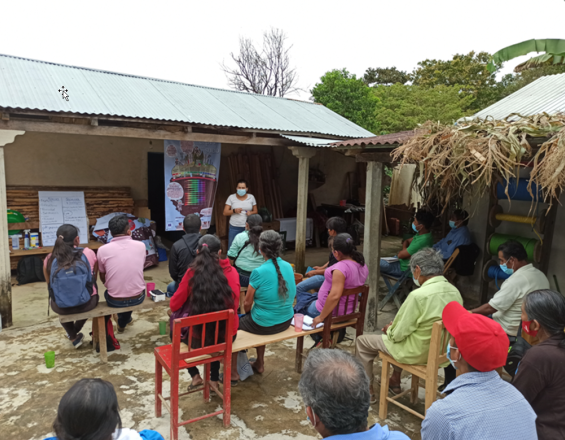
The Soil Enrichment Plan was designed and implemented to strengthen the capacities of 350 CEPCO members and 15 community technicians in 334 plots (468 ha) of UPIZS-South and Café Yogondoy Loxicha, from June 2021 to January 2022. The objective was to disseminate methodologies to improve soil quality, pH, availability of phosphorus, potassium, organic matter enrichment, micronutrients and beneficial microorganisms. Through training in Spanish and Zapotec, the objective was to increase production, nutrient quality/availability and reduce soil loss. The management of new technologies focused on carbon sequestration, biological nitrogen fixation and nutrient retention with biochar, which has an important potential for carbon sequestration due to its stability and resistance to decomposition in the soil, in addition to its low cost, thus promoting sustainable agriculture and mitigation/adaptation to climate change.
Context
Challenges addressed
In studies conducted in January 2018 by CEPCO, it was identified that soil degradation contributes to the low productivity and quality of coffee in Oaxaca. In addition, the coffee production system in most of the surface area of the state of Oaxaca is developed with conventional production methods, which neglects environmental conservation.
Location
Process
Summary of the process
Block 1, informed decision making, had the objective of identifying areas of opportunity related to the soil in the San Agustín Loxicha area, and served as input to design customized enrichment plans (block 2), aimed at increasing the quality and quantity of coffee, while respecting the uses and customs of production. This development of customized enrichment plans was done to identify and resolve basic soil and crop needs, and to lay the groundwork for a study of critical curves in coffee nutrition. For the program to be successful, the need to involve producers in each of the stages was identified. In block 3, capacity building of coffee producers, knowledge was strengthened, the objective was to train coffee producers in topics related to the enrichment needs of their soils and the implementation of personalized plans, which will allow them to better face the threats of climate change and economic instability, in addition to identifying solutions to the needs present in the soils of their coffee plantations, with advice and training.
Building Blocks
Informed decision making
A success factor for the solution was the use of historical information, such as published documents and the institutional knowledge of the Community Helper, to identify the needs of each agroforestry plot. With this information, the people who produce and have plots with similar nutritional needs were efficiently grouped together. In addition, it was important to evaluate and record the physical and chemical characteristics of the soil, as well as to record the plant species established in the coffee plots in the zone. These evaluations were necessary to identify the available inputs for the production of biochar. Subsequently, and evaluating the information obtained, personalized enrichment plans were designed, with the purpose of increasing the productivity and quality of the coffee, seeking to respect, as far as possible, the deep-rooted uses and customs of production.
Enabling factors
- Availability of historical information to identify areas of opportunity related to coffee soil;
- Creation of enrichment plans, according to the needs of the different zones in the impact area;
- Opening up to environmentally conscious markets, related to the consumption of products that do not contribute to climate change;
- Consideration of potential conflicts in the use of biomass for food and fuel, which could have a negative carbon footprint.
Lesson learned
- Lack of knowledge limits the appropriation of new technologies to enrich soils and have less impact on ecosystems, so it is necessary to show the consequences of intensive agriculture and the benefits of conserving nature;
- For the success of the soil improvement program, it is important to know the depth, color, texture and structure of the plot, and its capacity to retain/filter rainwater, as well as the shade plants established;
- Before making an intervention in the plots, it is necessary to identify local sources of raw material to produce biochar, so that the producers' doubts can be answered in the field;
- The producers in the field ask questions that are related to specific soil characteristics of their plot, so it is necessary to consider the soil differences between the coffee growing regions of the intervention zone;
- Coffee farming produces a large amount of waste each year, which is generally not adequately managed and becomes an environmental and sanitary risk.
Development of customized enrichment plans
The actions implemented were carried out to successfully protect and enrich the soils, for which it was necessary to identify updated soil and crop needs, and lay the groundwork for a study of critical curves in coffee nutrition. These consist of knowing the approximate proportion of nutrients that coffee plants can assimilate in each of the dominant soil units in the region, information with which updated and personalized enrichment plans can be made, according to the specific needs of each plot and each producer, including in the future, the nutritional requirements of each of the varieties established in the zone. In addition to the above, it is possible to identify in detail the role that each of the macro and microelements has in the development of coffee varieties, and the impact that nutrients have on the aroma and flavor properties of the final product can be determined.
Enabling factors
- Necessary knowledge for producers to be able to continue carrying out individual activities on their plots of land;
- Support and guidance to producers who need it;
- Identification of actions to protect and enrich soils, and follow up on their implementation;
- Accompaniment by a local technician for the interpretation of soil analyses;
- Carrying out updated and personalized enrichment plans, according to the results of the soil studies.
Lesson learned
- The soil studies with which the project began were more than three years old and did not reflect the current reality, which made it difficult to design enrichment plans that would meet nutritional needs;
- The soils in the area are impoverished, so it was important to identify their degree of suitability for shade-grown coffee and make appropriate recommendations to meet the particular needs of each site;
- Before carrying out interventions, it is necessary to identify the possibility of implementing nutrition strategies, respecting as much as possible the customs rooted in the area to avoid rejection by the producers, since in the area of action of the program they have the vision of "respecting the production customs of the grandparents";
- It is important to identify the nutrition activities currently carried out by the producers in order to rescue good practices;
- Due to the unique characteristics of the regions of Oaxaca, as well as the producers' plots, it is necessary that the actions taken are personalized.
Capacity building of coffee producers
The development of training for coffee producers, who are facing climate change and economic instability, was done with the purpose of providing them with knowledge that complements the knowledge they have acquired from practice, and that allows them to provide solutions to the realities they are living. This was done while respecting the deep-rooted uses and customs, such as planting rituals, which were included in the design of the trainings, with the advice and knowledge provided by CEPCO's agronomists and field technicians. The trainings were inclusive, with the participation of men and women from indigenous peoples, which is why they were translated into Zapotec in order to encourage interest, participation and the adoption of new production practices and technologies among coffee growers. These trainings help them prepare for the current climatic threats, and provide them with the tools to increase productivity, higher incomes and a better quality of life. Because climatic threats to coffee production are very specific to each geographic region, training plans must be designed based on local conditions, needs and issues.
Enabling factors
- Initial diagnosis to determine the starting level of training on soil and climate change;
- Training of local technicians on soil conservation and climate change, as these are the most pressing issues in the region;
- Identification of available resources in the communities to determine how they will respond to soil impoverishment and climate change;
- Raising awareness of the importance and benefits of agroforestry coffee systems so that they take ownership of this form of production.
Lesson learned
- At the beginning of the training sessions, the knowledge of the producers was not taken into account, which caused boredom and loss of interest, so it is important to carry out a knowledge diagnosis prior to the training sessions;
- It is important that the training activities are pleasant and attractive to keep the attention of all participants, including children and adolescents;
- It is important that the strategies for adaptation to climate change in the coffee systems are built in a participatory manner, respecting the uses and customs of the locality, since not taking this into account limits the success of the activities;
- Prior to the development of the training plan, it is necessary to identify the strategies for adaptation to climate change in the coffee system, the implementation of which is necessary to confront the risks and vulnerabilities identified by coffee producers;
- Systematize local and regional experiences of actions implemented by producers and cooperatives in the region to compile local knowledge and their forms of production.
Impacts
We sought to improve the yields and quality of coffee production of 350 people with regenerative and organic agriculture, which generated economic benefits and avoided land use change. CEPCO is currently made up of 43% women, so the activities were carried out with a gender focus to strengthen, support, involve and empower them without distinction, encouraging them to be trained and informed. This agriculture counteracts soil degradation and sequesters carbon with the application of biochar, which improves its physical, chemical and biological properties, resulting in increased crop productivity.Biochar, incorporated into the soil, acts as a long-lived carbon reservoir, delaying its return to the atmosphere as CO2, thus helping to mitigate climate change. In the coffee-growing area, the raw material for making biochar was easily obtained, since it was made with harvest and pruning residues, human and poultry manure. This improved the soil by retaining water and nutrients, which increases crop productivity and CO2 retention. Moreover, the producers have a greater knowledge of the importance of soil care and a better command of practices that allow them to improve their biophysical conditions.
Beneficiaries
People who produce coffee in Unión de Pueblos Indígenas Zapotecos de la Sierra Sur (UPIZS-Sur) and Café Yogondoy Loxicha, in the municipality of San Agustín Loxicha.
Sustainable Development Goals
Story
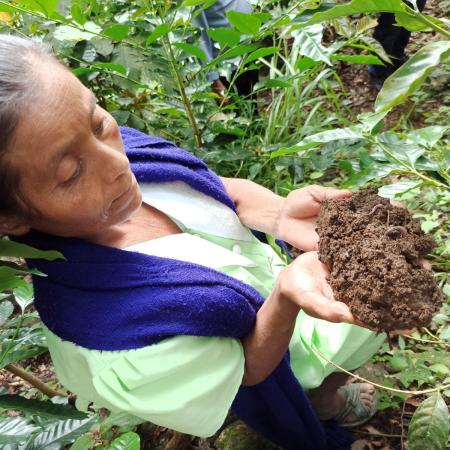
Macrina Almaraz is a coffee farmer who used traditional agricultural practices, in which she did not consider the soil or the plant, and did not understand why production dropped every year. Her community was discouraged by the low production, and when they were invited to the training sessions as part of the Alliance for Sustainable Landscapes and Markets project, the producers expressed their disinterest by designating their wives, daughters or granddaughters as representatives, so that they would be the ones to attend the workshops. However, this situation was used as an opportunity to address the issues from a gender perspective. The women who attended the workshops had access to training, which led to a very important change: the empowerment of women producers. The women farmers now have the necessary knowledge to produce coffee in the southern part of Oaxaca. In addition, CEPCO, the organization to which Marcina belongs, currently has 43% of its membership made up of women, so that the activities carried out have a gender focus, with which it seeks to strengthen, support, involve and empower women in activities that in other sectors or spaces are rejected, delegated or not considered. CEPCO's women stand out for their coffee production and quality, and are respected by the organization, encouraging them to participate in all activities. Macrina was identified as a leading producer because of her participation and interest in the training, with which she was able to considerably increase the production and quality of her coffee. In the year 2022, she and all the producers in the area faced the adversities caused by Hurricane Agatha, which affected mainly shade trees and coffee plants, which were replaced with coffee plants of the Geisha variety and shade trees. In addition, activities were carried out to improve the quality of the coffee, wet milling and drying processes.
Currently Macrina is an example for the production of coffee of worldwide excellence and has become an agent of local change, since she uses techniques focused on the care of the environment and shares her knowledge with her community. She does not receive any monetary payment, but the recognition of her group and organization is enough for her.

